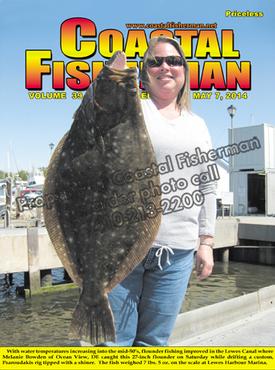


Article by Capt. Steve Katz
 An electronics trend this boating season is the “Glass Bridge”. This is a helm station that is comprised of multiple large touch screen displays. The resulting appearance is smooth, clean and intuitive. A system like this is easily customizable to the needs of each individual operator.
An electronics trend this boating season is the “Glass Bridge”. This is a helm station that is comprised of multiple large touch screen displays. The resulting appearance is smooth, clean and intuitive. A system like this is easily customizable to the needs of each individual operator.
The Glass Bridge is derived from aircraft terminology (Glass Cockpit) for airplanes that have only electronic gauges (LCD style). This aerospace industry approach began in the early 80’s and was rapidly accepted by pilots worldwide by the late 90’s, primarily due to the efficiency, reliability and legibility of the displays.
In our marine industry, we are in the beginning of the Glass Bridge platform. Furuno, Garmin, Raymarine and Simrad all offer products that allow you to “build” a glass bridge on your boat. These manufacturers are also working with the boat builders to integrate all on-board systems early in the design stage to incorporate the full Glass Bridge functionality.
One boat builder, Scout Boats, is working closely with Garmin and Mastervolt to provide multi-system integration on new boats. Using a Garmin touchscreen display, all switching and system monitoring can be accomplished from the Garmin touchscreen displays. The electronic switches are operated on-screen through Mastervolt’s C-Zone hardware and software products. This system was first integrated into the Scout 350LXF.
Simrad has a similar system, which seamlessly integrates with the Mercury Marine VesselView engine monitoring system, (the Mercury VesselView 7 display is actually the same hardware as a Simrad NSS display). The Simrad systems also integrate with the Mastervolt C-Zone, allowing all switching through the multifunction display. If you saw the 39’ Under Armour Fishing Team Yellowfin at the 2013 White Marlin Open, that boat was one of the first with this fully integrated Simrad/Mercury/C-Zone Glass Bridge.
In case you were wondering, the Mastervolt C-Zone system does have a mechanical manual back-up capability in the event of a malfunction. In addition to a multifunction display, the C-Zone system can be operated by a dedicated display, consumer tablet or key fob to control and monitor the operation of shipboard systems such as bilge pumps, live wells, navigation lights and deck lighting.
Most of these Glass Bridge systems also include the ability to control a music entertainment system on the same multifunction screens, when connected to a compatible stereo such as Fusion, Simrad Sonichub or Garmin Meteor.
These modern displays are also capable of displaying engine data on the screen in addition to or in place of traditional engine gauges. Often the multifunction display is brighter and easier to read than the original engines gauges. If you have an electronically controlled engine, chances are that you can connect the engine to the display with a special black box, referred to as a gateway. Modern marine engines use the automotive common area network (CAN) standard of J1939, a similar protocol to NMEA2000 and a proper gateway can easily exchange data between the two. Most outboards engines from 2006 and newer have this capability and the hardware is readily available to add this feature. Don’t be tempted to start twisting wires together from your engine to your marine electronics, you want to be sure each system is isolated properly and using the recommended gateway is the proper way to interface an engine into a navigation network.
If you have an older engine, there are products from manufacturers such as Actisense (the EMU-1) and Maretron that can convert traditional analog sending units, such as water temperature and oil pressure, to the NMEA2000 digital format. Whichever method you use to convert the engine data, the result is a NMEA2000 PGN (Parameter Group Number) for that specific engine data field, broadcast onto the NMEA2000 network for interpretation by a modern display. Not all the multifunction displays have the same functions and display capabilities for engine data, so be sure to research the various systems before you purchase the hardware.
While this may sound difficult and expensive, it is not necessary so! A basic multifunction display, even a few years old, is often capable of displaying numerous NEMA2000 data. You can build your own system by adding the appropriate NMEA2000 sensors as your budget allows and displaying that data on the multifunction display. This is not only for large boats, a small center console helm can get crowded quickly with multiple displays, switches, indicators, controls, etc. A large, single display that can control the function of hidden “black boxes” and be used as the engine gauges may often make the best use of space and keep a clean and simple look that is also easier to operate.
While all the glossy manufacturer advertising shows Glass Bridges systems costing as much as a luxury car, you can get started by building your own system with the hardware you may already have.
Captain Steve Katz is the owner of Steve's Marine Service and holds NMEA MEI, AMEI, NMEA2000 certificates, ABYC Master Technician certification and factory training from many manufacturers.